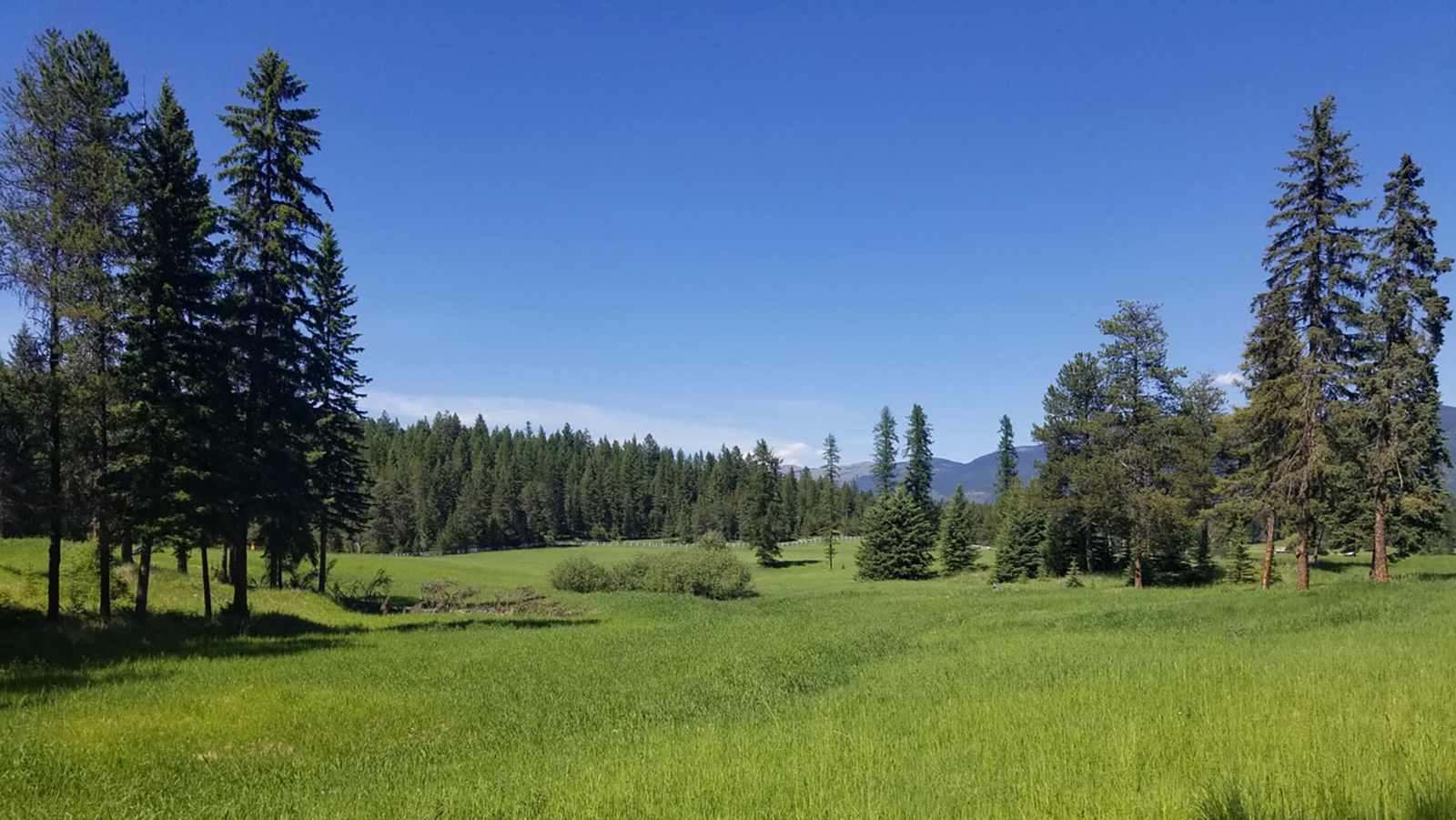Conservation Deal Near Whitefish Protects Key Grizzly Habitat
Property south of Stillwater State Forest serves as conduit between Glacier Park and Cabinet-Yaak grizzly bear ecosystems
By Tristan Scott
One-hundred acres of prime grizzly bear habitat will remain open and undeveloped in one of the nation’s fastest-growing regions after a local landowner worked with the nonprofit Vital Ground Foundation to finalize a conservation agreement on a property near Tamarack Creek, about nine miles north of Whitefish.
The property lies just south of the Stillwater State Forest in a habitat-rich zone that helps connect grizzly bears and other wildlife in and around Glacier National Park with species further west in the Salish and Cabinet mountain ranges of northwest Montana, where the grizzly population remains fragile. Grizzlies that occupy habitat surrounding Glacier are part of the robust Northern Continental Divide Ecosystem, the largest distinct population in the Lower 48 at roughly 1,100 bears. Conversely, the remote Cabinet-Yaak Ecosystem hosts a largely isolated subpopulation of around 50 bears, and wildlife biologists are working to augment the population with transplants and natural biological exchanges.
The specter of development threatens to block those arterials, however, lending greater urgency to the overarching conservation goal of connecting a regional landscape, biologists say.
“If we can build wildlife corridors — connectivity — between these remaining strongholds of wildlife, it will hold up over time,” said Doug Chadwick, a biologist, author and Vital Ground trustee who lives in Whitefish. “This is saving nature on a large scale and a connected scale.”
Projects that preserve habitat linkage areas like the Tamarack Creek property help bridge larger cores of national forestlands and play an outsize role in the overarching conservation goal of connecting a regional landscape for wildlife. The project area is among 188,000 acres of state and private lands north of Whitefish that garnered priority status in Vital Ground’s “One Landscape Initiative,” a conservation strategy to protect the most important private lands that link existing habitat strongholds tracking from Canada to the Glacier area, as well as from northern Idaho south to the Greater Yellowstone Ecosystem.
“‘One Landscape’ is simply a knitting together of the strongholds that remain,” Chadwick said. “It’s all we’ve got, and if we lose it, it’s gone forever.”

Beyond grizzly bears, the project site’s lush tracts of forest, open pasture and wetland habitat provide range for wolves, elk, deer and moose, as well as wide-ranging species of concern including Canada lynx and wolverine. The property will remain under private ownership, with its new conservation easement maintaining a portion for leased hay production and horse pasture. It also protects water quality and the scenic, rural character of the rapidly developing landscape girding Whitefish.
“This area is critical for wildlife and wildlife movement,” Mitch Doherty, conservation director for Vital Ground, said. “But it’s also still quiet and scenic, with that rural feel that we’re losing in too many places throughout western Montana right now.”
The project conserves land in a region where development pressure is at a record high, Doherty said. Flathead County, and in particular the communities of Whitefish and Kalispell, saw its median home price rise by nearly 50% from 2020 to 2021 as people flocked to western Montana in a pandemic-fueled rush.
Recognizing the acreage would be devoured by the area’s surging real estate market, the private landowner agreed to an easement that limits future uses of the land in order to permanently protect its conservation values. According to Doherty, the magnitude of modern development pressure underscores the importance of conservation projects like this one, which he characterized as a “crucial win” for landscape connectivity.
Limiting subdivision and development not only protects the area’s rural and agricultural identity, Doherty said, but it allows wide-ranging species like grizzly bears and wolves to maneuver around pockets of human density between Glacier Park and the Canada border. That helps reduce the risk of conflict through run-ins with people, domestic livestock and household attractants like garbage, all of which have emerged as a leading cause of grizzly bear mortality due to management removals.
“The rate at which development is occurring in and around the Flathead Valley right now is astounding,” according to Doherty. “If it weren’t for landowners like this who want to protect the rural character of the valley and its habitat for wildlife, we couldn’t retain the scenic vistas and open spaces that everyone cherishes in Northwest Montana. Without conservation protections, this property would likely be dotted with homes in the next five to ten years.”
Major support for the Tamarack Creek project came from Montana Fish, Wildlife and Parks, the PDJ Family Foundation and numerous individual contributors.